I'm going to buy a PC tower case that has only one LED intended to be used as the power LED, and no separate HDD LED is available. My intention is to have that single LED lit at about 50% of its intensity when the PC is turned on and there's no HDD activity, and to have it lit at about 100% brightness to indicate HDD activity. Thus, it would become some kind of a "hybrid" LED indicator.
I'm not sure how the LED outputs are actually constructed on PC motherboards, so my initial thoughts were to use optocouplers and stay on the safe side. Here's the citcuit I had in mind, but please keep in mind that I'm nowhere close to being an expert when it comes to designing electronic circuits:
I haven't calculated the resistor values yet, though having 220 ohms in all places should be fine -- or at least it looks to me like that. Also, I haven't looked yet at the exact optocouplers and their CTR values. Could the whole thing be made simpler without risking to damage the motherboard, which is quite expensive?
Please advise. Thank you!
UPDATE #1: Based on an answer below, here's how a simplified schematic may look like. It would also handle ACPI sleep states when there's no +5 V from the PSU except the +5 VSB, and the power LED blinks in such cases. Would it work?
UPDATE #2: Yup, it should work as pointed out below, and it also cuts the required number of components in half. I'll try it out once my tower case arrives so I can see what brightness levels work well, and I'll report back.
UPDATE #3: The diode D1 is redundant, as the LED inside the optocoupler can't be damaged by the reverse voltage coming from the motherboard's HDD LED output. Simplified schematic follows below.
